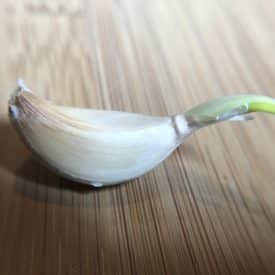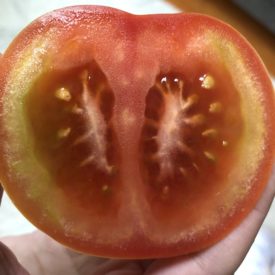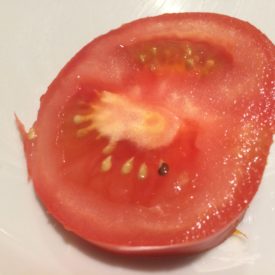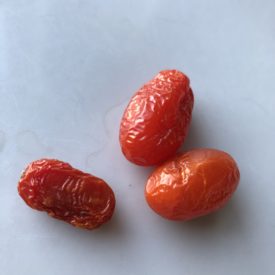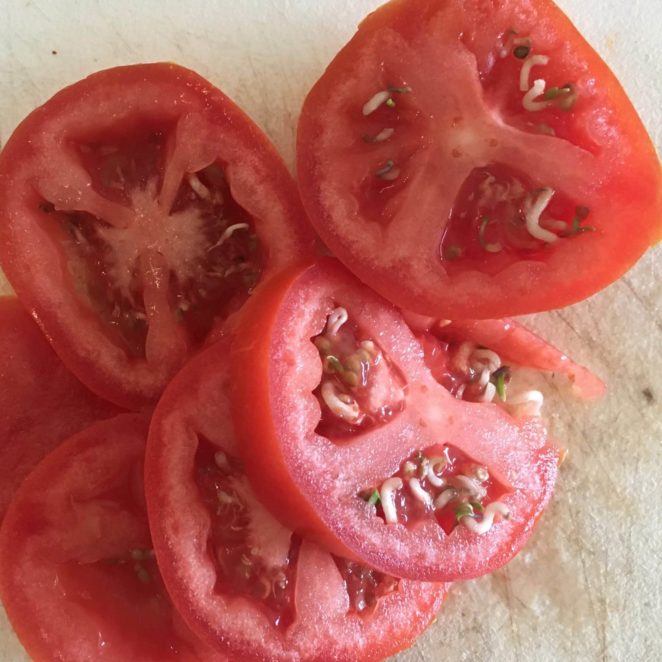
What you see: White and green squiggles in tomato flesh.
What it is: Sprouting tomato seeds!
Eat or toss: As long as the tomato is intact and not showing signs of rotting, etc., the sprouting tomato seeds don’t elevate the risk of eating the tomato and its sprouts. Some say such tomatoes might not taste as good and should be used in cooked dishes, but I’ve eaten them raw and haven’t found the flavor to be off. It probably depends on how much the sprouts have grown.
Are sprouted tomatoes edible? Here’s the story.
We knew this tomato was not long for this world. We were rushing to use it up when we sliced it open and discovered….it was pregnant?
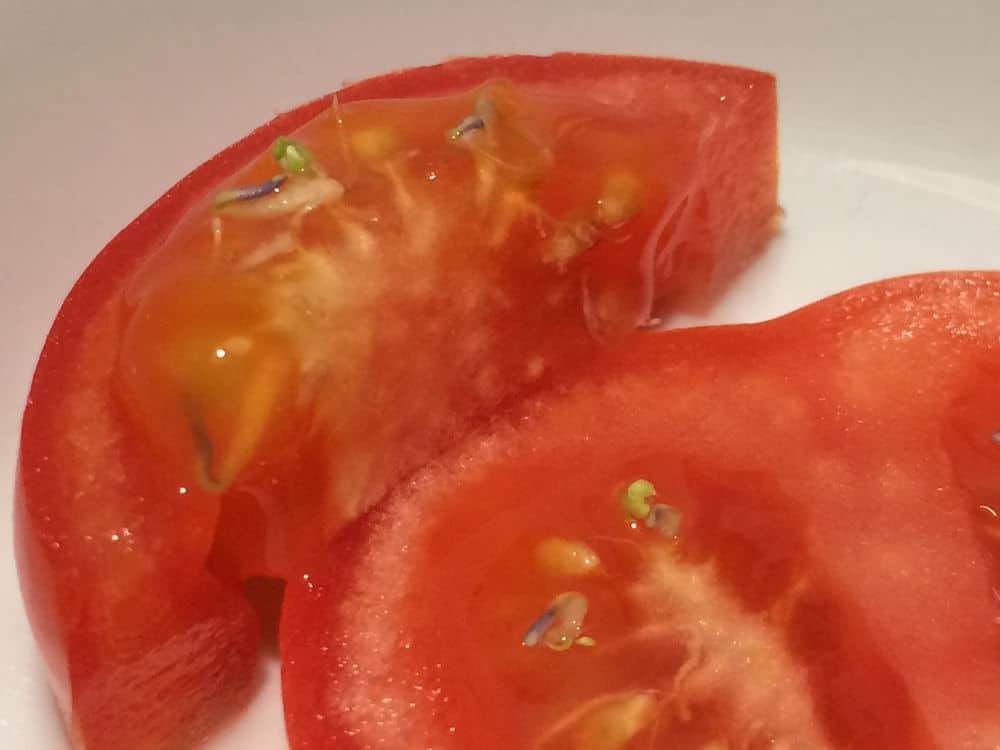
Ok, that’s not really how it works in plant world, but this tomato really was starting to grow baby tomato plants. The seeds germinated while still inside the parent plant, splitting open to reveal eager green sprouts. In plants, the phenomenon is known as “vivipary.”
Why did this tomato’s seeds start unleashing those wormy looking sprouts? First off, it was an older tomato. The hormone that prevents seed germination was probably running low.
Second, the tomato was on the counter in my too-warm apartment, where an outdated heating system often creates sweltering indoor weather in January. That high temperature, along with the moisture inside this tomato, created an ideal germination climate.
So, now that we know what’s going on, there’s the question of whether you should eat these wormy slices. You may be inclined to avoid them because a) they look weird and b) you’ve heard that the green parts of tomatoes carry a toxin similar the toxin that makes very green potatoes unsafe to eat.
But, luckily, there’s no need to worry about any harm from those little green tomato sprouts.
The substance in question here is tomatine, which is also present in the underripe green tomatoes that are fried in that famous Southern dish, and has not been proven to be particularly dangerous to people, especially in normal-sized quantities. Harold McGee, writing in the New York Times, does a great takedown of rumors of toxic tomato parts.
In assessing whether you should eat a viviparous tomato, you’ll also want to do a close inspection for rot or mold — given the age of the tomato, they’re both more likely.
As for the image of the tomato at the top of this post, which you’ll also find below, that was submitted by EatOrToss reader Beth Gingold, who also happens to run an organization that helps people reduce their waste (Recycle Leaders — check it out!). Hers was more advanced, but she ate the tomato slices and had this to say: “They tasted fine – actually I like sprouts and the sprouts tasted like sprouts and added a kind of crunchy texture, so it was like a little bonus.”
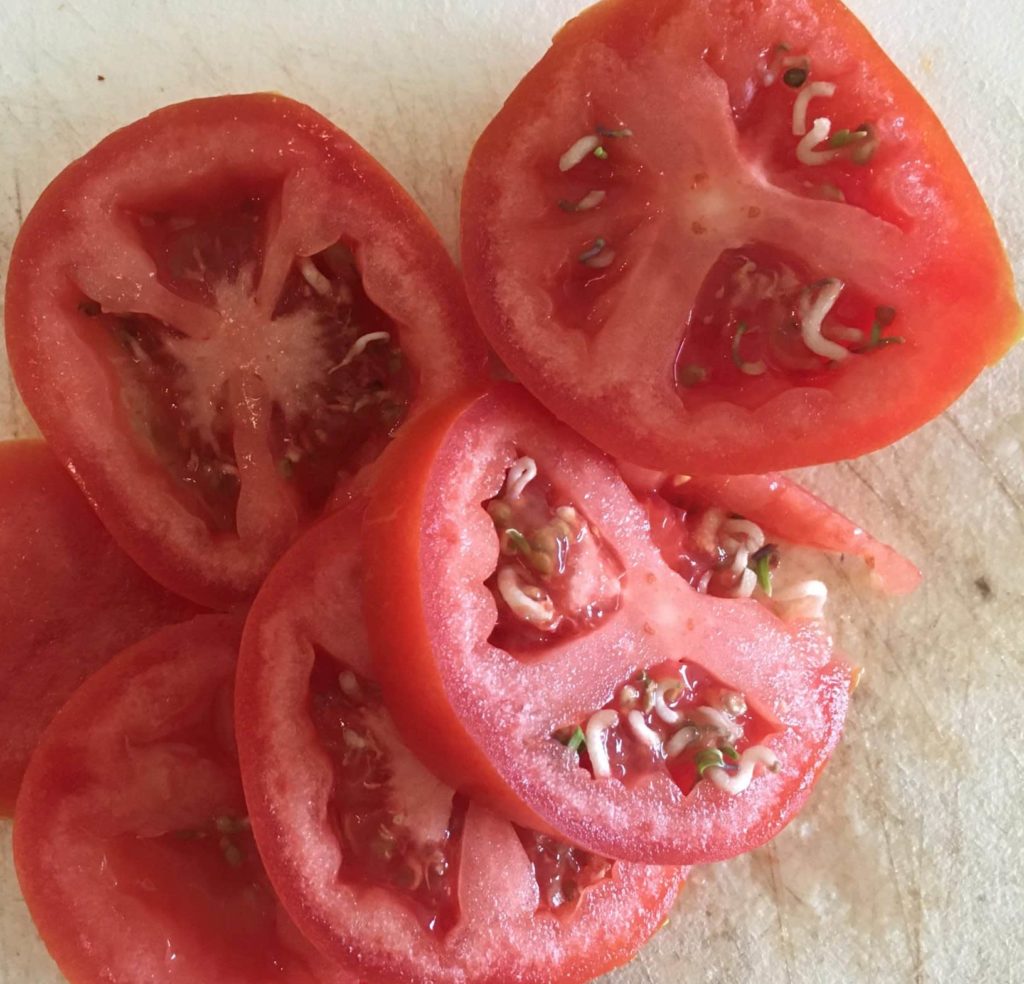
Despite our positive experiences, according to Extension.org, tomatoes with sprouted seeds may not taste as good, so they may be best used in cooked dishes. If you encounter one of these wormy delights, my suggestion is to just sample it and make your own call (But not if there are any actual worms!).
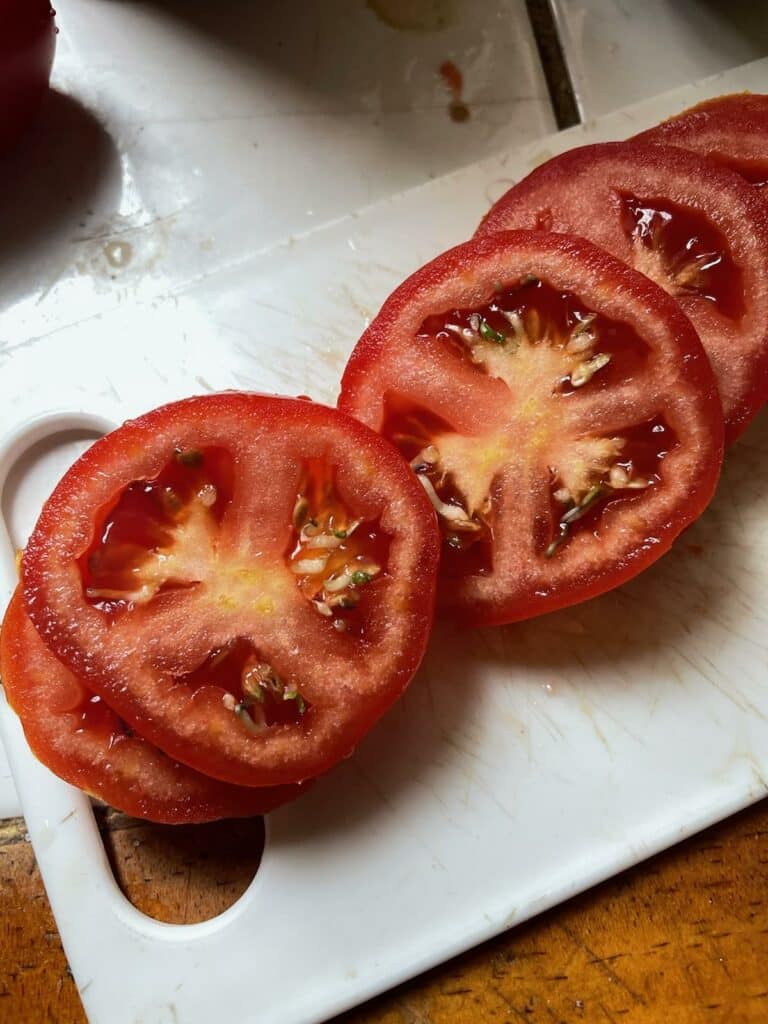
Can you eat a tomato if its sprouts have broken the skin?
If the sprout has broken the tomato skin, the calculation changes a bit. That broken skin means nutrients and moisture inside the tomato are more available to any neighborhood microbes. So, the tomato will rot faster and, in the off chance a disease-causing organisms lands there (unlikely, but not impossible), it will be better able to fortify itself in the wet tissue, and thus more likely to sicken whoever eats the tomato. Whether you eat or compost a tomato with broken skin depends on your own comfort with risk. Below, check out images, also from Beth Gingold (thanks Beth!) of a tomato whose sprouts busted through the skin.
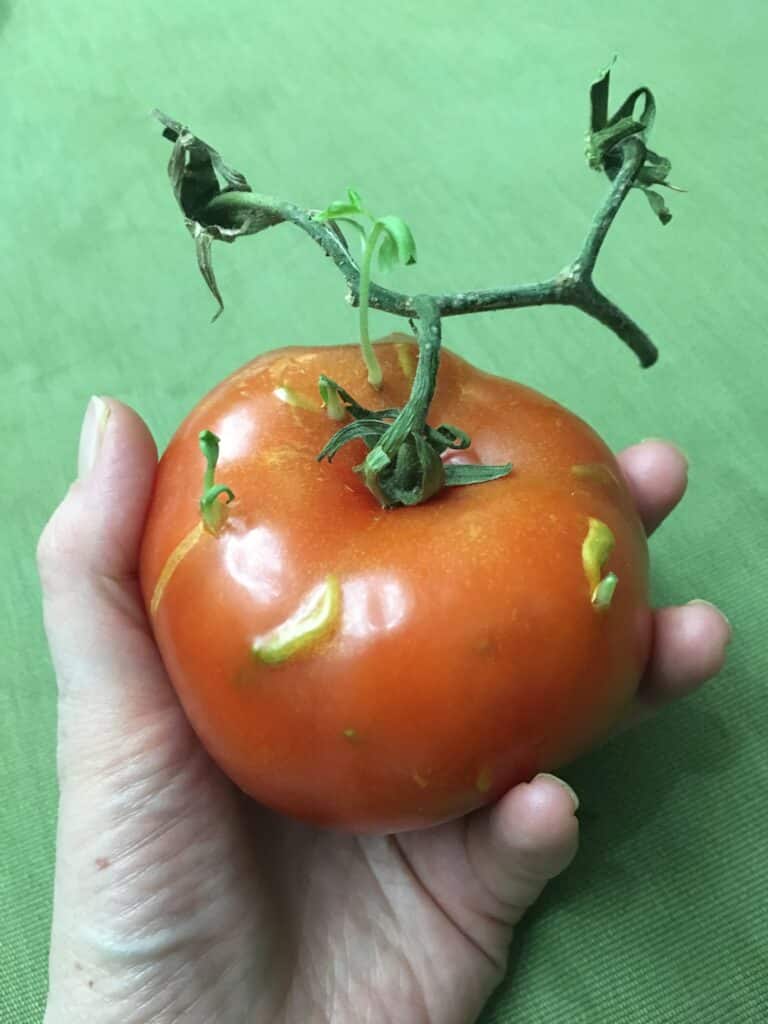
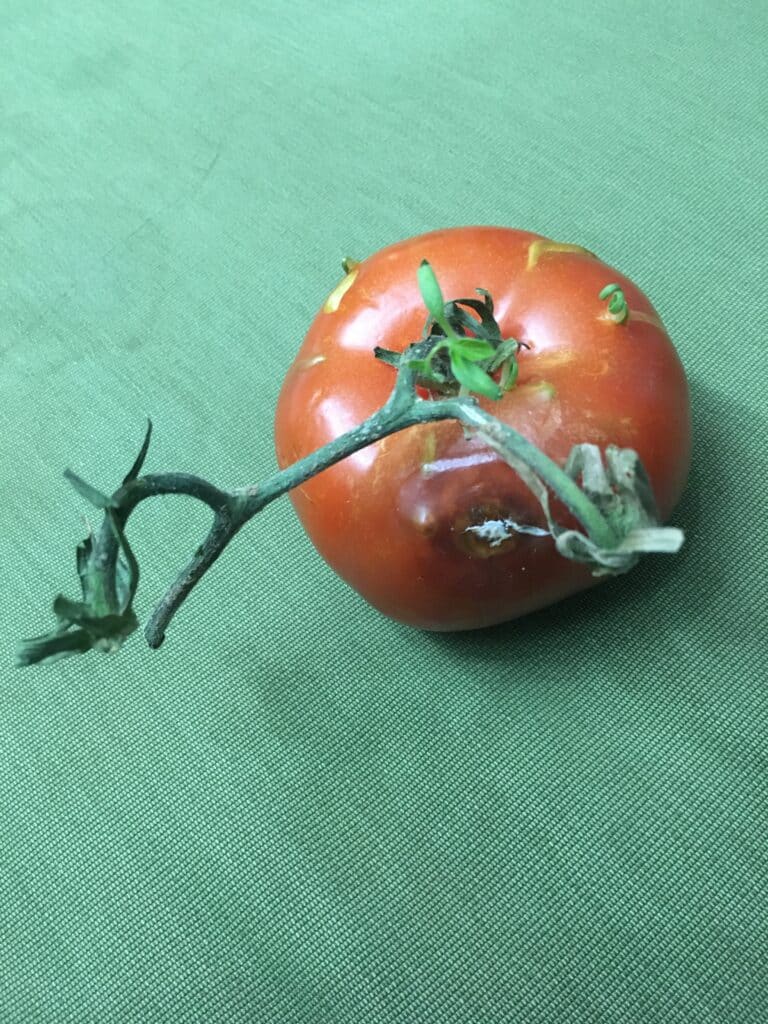
SOURCES:
- I cut into a locally grown tomato and all the seeds inside the tomato were sprouting — Extension.org
- Seeds sprouting inside a tomato – University of Connecticut Extension
- Vivipary – Free Dictionary.com
- Accused, Yes, but probably not a killer. Harold McGee. July 28, 2009. The New York Times
- Abscisic Acid – McDaniel College

